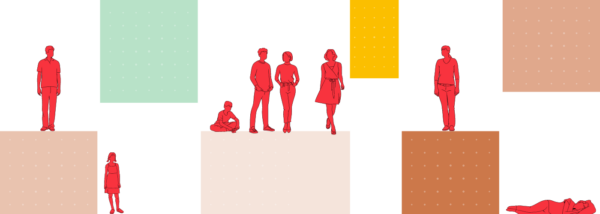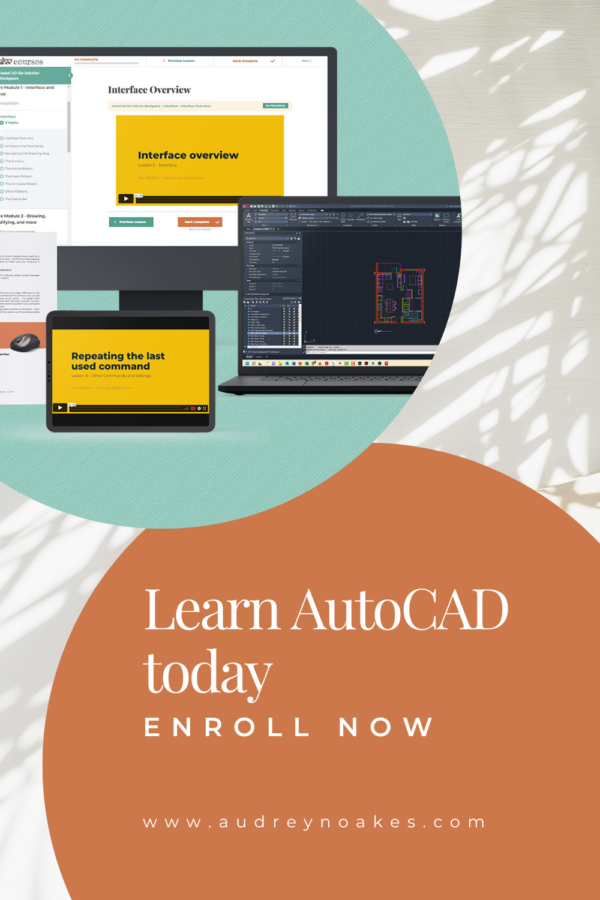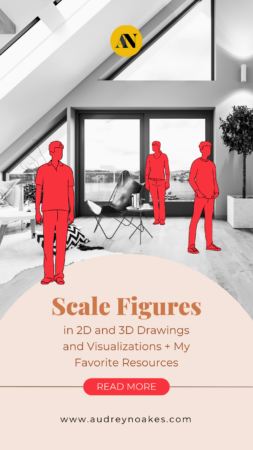
What are Scale Figures?
Scale figures are an important element of any drawing or visualization. Scale figures can help enhance the visual appeal of your drawings and visualizations, as well as provide a realistic sense of scale for viewers.
Most of the time, scale figures refer to people. However, scale figures can represent people, animals, vehicles, furniture, buildings, and more. They can be used in both 2D drawings and 3D visualizations to add detail and realism to your artwork. Essentially, scale figures are added to drawings or visualizations where anyone looking at the drawing or visualization understands the size and proportions of the space. Inherently, we know how big people are, so if we see a person represented in a room, we have a pretty good sense of the size and proportions of the space.
The Benefits of Using Scale Figures in Your Drawings & Visualizations
Scale figures are a great way to communicate scale in drawings and visualizations. They can be used to emphasize the size of objects or buildings, or to demonstrate the relative size of different elements in a drawing. Additionally, scale figures can be used to engage clients and help them understand the project better.
As designers, it’s important that we remember that the drawings and visual materials we look at every day might not be as immediately understood by clients and others who don’t have this same familiarity. I know if I look at a floor plan, I immediately check the relative size of a door in plan to understand the overall size and proportions of a space. But if I’m honest, that took years of looking at these drawings. Not everyone has that same exposure or spatial vocabulary.
This is why scale figures are so important!
Using human figures in your drawings is a great way to provide context and perspective for viewers. It allows them to visualize how people interact with the space being designed, as well as how they will experience it once it is built. This makes it easier for clients to understand the project and make informed decisions about their design choices.
Styles of Scale Figures
There 5 main styles of scale figures:
Black or solid color silhouettes
One of the easiest ways to add a scale figure to a drawing or visualization is via a silhouette. These are easy to source and add to a variety of software programs. It’s helpful in that it’s nondescript so the focus can be on the drawing or rendering itself. But it’s also nondescript enough that it can be boring if you’re not careful.
Outlined human figures
The next easiest way to add a scale figure is via an outline of a silhouette or human figure. These are similarly simple to a solid silhouette but they also give a bit more opportunity for some character and style to be evident in the scale figure being added. Sketched or stylized outlines add a bit of flair without distracting from the content of the drawing or visualization.
Cut out photographs
Probably the most popular technique is simple a cutout of a photographic image of a human. Photoshop as well as online platforms like Canva makes this technique super easy to do. You can also do a lot of editing in Photoshop, to help mimic motion, shadows, reflections, etc. when you add a photograph as a scale figure to a visualization.
Illustrated figures
More and more popular to see is illustrated figures. These illustrated humans can give the human figures a bit more anonymity compared to actual photographs, but a lot more character compared to a plain silhouette.
3D Modelled People
Also, growing in popularity are 3D people. Various rendering engines like Enscape or Lumion, have a great library of scale figures like this, but there’s a caution in utilizing these! They get better all the time, but there’s still the phenomenon of ‘uncanny valley’. Inherently, there’s something creepy about people who look realistic but not quite real. (I mean there’s a reason, I’ve never made it all the way through The Polar Express…
How to Choose the Right Scale Figure For Your Design Communications?
Beyond the style of the drawing or visualization and personal preference, there are a few things to consider when choosing a scale figure.
Are you designing a space for a residential client?
If so, it might be creepy for them to see a photograph of a person in the space that is their future home. (Then again, you could tap into a client’s sense of humor if you added a picture or two of their celebrity crush in the rendering of their new space).
Are you designing a commercial space?
If so, think about the types of customers or clients this type of space would serve. A seaside café would look a little odd to be filled with a bunch of people in business suits. Your scale figures should reflect the nature of the space and it’s atmosphere.
Should a specific or broader community be represented?
For a long time, renderings were dominated by white males in business suits. The stock photography that existed at the time was limited, so this was the easiest way to add a human being to a visualization. But nowadays, there are a lot more options, so a more representative selection of scale figures can be included to offer a more inclusive and accurate illustration of people inhabiting public spaces.
My top resources:
Last but not least, I wanted to share some links to some good online resources for human scale figures that can be used in drawings and visualizations. I’ve organized them by style below, but let me know what you think. Have I missed any good resources?
Silhouettes / CAD blocks scale figures
Outlines / CAD blocks scale figures
Photographic cutouts scale figures
More illustrated styles scale figures
*This is an affiliate link, meaning if you sign up for Canva Pro, I earn a small commission. I highly recommend Canva, whether you sign up via this link or not. 😊






